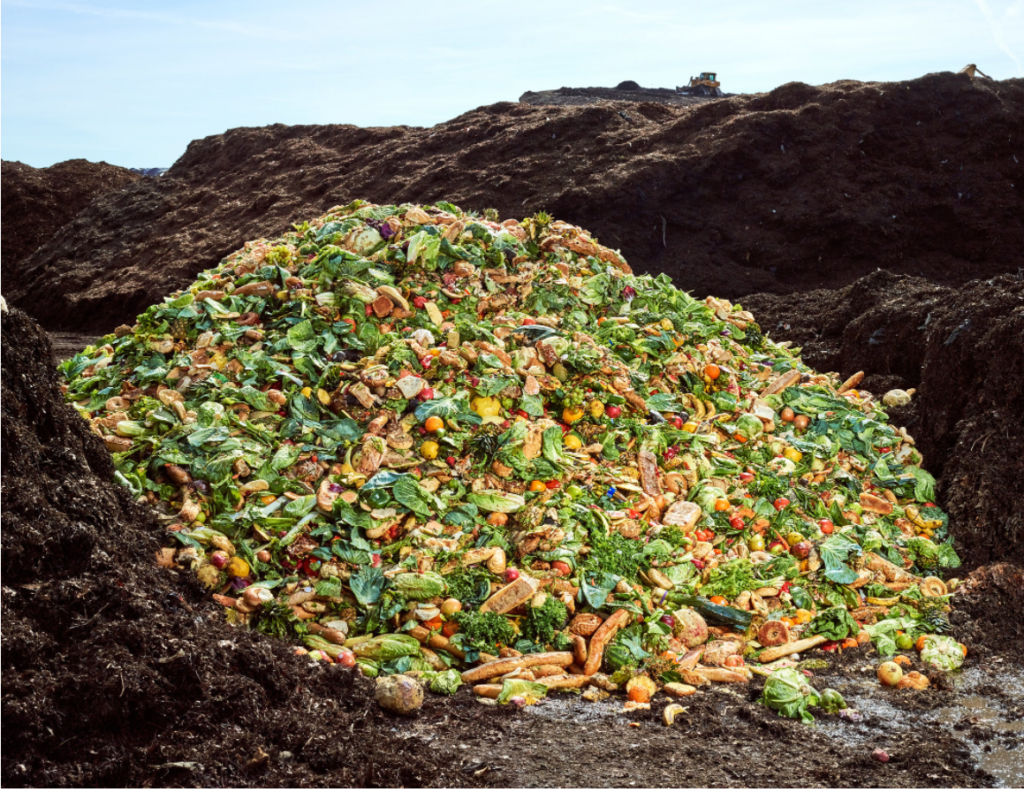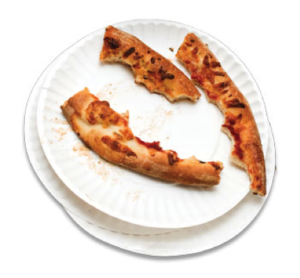Americans generate 65 million tons of food waste annually. Could compostable packaging aid in recovering significant amounts of food scraps for composting?
Composting may seem like a new phenomenon, but commercial composting operations have been in business in the United States since the late 1980s. While many people are familiar with backyard composting — collecting kitchen food scraps to be composted in one’s backyard or setting yard trimmings curbside to be composted by municipalities; modern composting operations are more complex. There are nearly 140 active commercial composting facilities in the United States producing rich soil amendments (the end product from the composting process). These facilities process a variety of compostable items, such as yard trimmings, food scraps, and packaging.
 Still in its infancy, commercial composting is growing rapidly, due to the U.S. Environmental Protection Agency’s (EPA) goal to reduce food waste nationally by 50% by 2030 from a 2010 baseline. A study commissioned by ReFed, a non–profit organization, analyzed the best opportunities to reduce food waste in the U.S. Their groundbreaking report determined that centralized composting was the best option, surpassing 26 other solutions to food waste management when comparing waste diversion and emissions reduced.
Still in its infancy, commercial composting is growing rapidly, due to the U.S. Environmental Protection Agency’s (EPA) goal to reduce food waste nationally by 50% by 2030 from a 2010 baseline. A study commissioned by ReFed, a non–profit organization, analyzed the best opportunities to reduce food waste in the U.S. Their groundbreaking report determined that centralized composting was the best option, surpassing 26 other solutions to food waste management when comparing waste diversion and emissions reduced.
In areas with centralized composting facilities, challenges still exist. Many composters do not accept compostable packaging, claiming to only want the “good stuff,” also referred to as pre-consumer food scraps (pictured right). Composting facilities will often refrain from collecting post-consumer food scraps and compostable packaging because they believe it will lead to greater levels of contamination. Such contamination can complicate the composting process as non-compostable items will not adequately break down within the commonly used covered aerated static pile system. But refusing to collect compostable packaging might be costing composters a sizable source of food scraps.
There is some anecdotal evidence to support the hypothesis that compostable foodservice packaging significantly increases food scrap diversion. However, few controlled studies have been conducted to specifically measure a relationship between compostable foodservice packaging and food scraps diversion.
The Sustainable Packaging Coalition conducted a study in 2016 to explore how and if compostable packaging can increase food waste diversion rates; bringing more food waste to composters. The study determined the proportion of food to packaging in front-of house areas, as well as how much food was captured in both back-of-house and front-of house areas.
 The SPC conducted waste characterizations at five venues, and the results were striking. It was found that compostable packaging could achieve a food scrap capture rate of 35-86% in front-of house areas. Oftentimes, composters do not collect food scraps from front-of house areas due to the possibility of contamination by the public. But at the largest music venue in the study, FarmAid at Jiffy Lube Live Pavilion, all the packaging was compostable, but less than half of the total amount of food scraps were generated in back-of-house areas. Therefore it was determined that packaging served as a vehicle to bring front-of house food to the compostables bin. The study did not account for contamination, the data captured the max capacity for food scrap capture in an ideal environment, in which all waste materials were sorted properly.
The SPC conducted waste characterizations at five venues, and the results were striking. It was found that compostable packaging could achieve a food scrap capture rate of 35-86% in front-of house areas. Oftentimes, composters do not collect food scraps from front-of house areas due to the possibility of contamination by the public. But at the largest music venue in the study, FarmAid at Jiffy Lube Live Pavilion, all the packaging was compostable, but less than half of the total amount of food scraps were generated in back-of-house areas. Therefore it was determined that packaging served as a vehicle to bring front-of house food to the compostables bin. The study did not account for contamination, the data captured the max capacity for food scrap capture in an ideal environment, in which all waste materials were sorted properly.
Composters are reasonable to fear that collection of front-of-house food scraps can lead to small amounts of contamination, and ultimately lead to costly decontamination processes. Many composters are unwilling to jeopardize the quality of their soil amendment, which often represents the bulk of their revenue. The SPC hopes this study will show composters the potential gains from allowing more packaging into their collection streams. The significant increases in food capture will help offset the cost of decontamination, and ultimately help consumers become more aware and engaged in composting efforts. This is only the start of the conversations with composters, and serves as the beginning for re-evaluating compostable packaging as an asset, not a determent to the compost industry.
Compostable packaging will play a significant role in achieving the EPA’s food waste reduction goal. While 7% of composters already accept compostable packaging, wider adoption is needed to divert additional material. With proper labeling on packaging through the new How2Compost label, contamination can be reduced.
Stay tuned for the release of the SPC’s full Value of Compostable Packaging report later this month.
